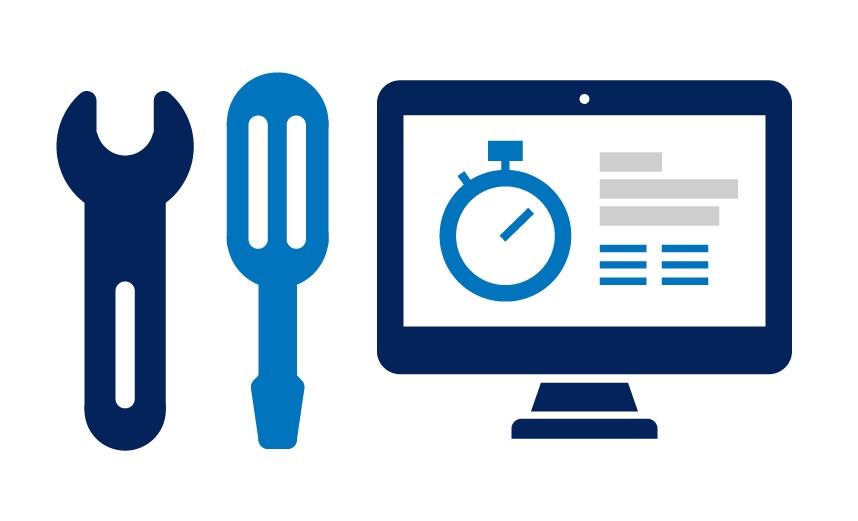
In today's world, businesses rely heavily on the use of tangible assets to carry out their operations. These assets include machinery, equipment, vehicles, and other tools necessary to keep the business running. However, with the continued use of these assets, there is a need for regular maintenance to ensure their longevity and efficiency.
Maintenance management is, therefore, a critical aspect of any business operation to ensure that assets are properly maintained and utilized to their full potential.
Traditionally, maintenance management was done using paper-based systems, which were cumbersome and often resulted in lost or misplaced information. However, with the advent of computerized maintenance management systems (CMMS), businesses can now streamline their maintenance operations and improve efficiency.
In this article, we will explore the importance of maintenance management, the concept of computerized maintenance management, and the benefits of using a CMMS in your business.
Maintenance management is a critical aspect of any business operation that relies on tangible assets. Proper maintenance ensures that assets are in good working condition, reducing the risk of sudden breakdowns or failure that can result in costly downtime. Downtime not only affects the business's productivity but also leads to a loss of revenue and potential customers.
Additionally, maintenance management helps to extend the lifespan of assets, reducing the need for frequent replacement and saving on costs. It also ensures that assets are being utilized to their full potential, maximizing the return on investment.
Tangible assets are physical items that can be seen and touched, such as machinery, equipment, and vehicles. These assets are critical to the operation of a business, and regular maintenance is necessary to ensure their longevity and efficiency. Maintenance work involves a wide range of activities, including inspections, repairs, and replacements.
To effectively manage maintenance work, businesses need to keep track of their assets and their maintenance history. This information helps to identify potential issues before they become major problems and allows for proper scheduling of maintenance activities.
Computerized maintenance management is the use of software to manage maintenance operations. CMMS software allows businesses to automate maintenance processes, including scheduling, tracking, and reporting. The software also provides a centralized database for storing information on assets and their maintenance history.
CMMS software is designed to streamline maintenance operations, saving time, and reducing costs. It also improves accuracy by eliminating manual processes and reducing the risk of human error.
With the use of CMMS software, businesses can optimize their maintenance work, ensuring that assets are properly maintained and utilized to their full potential.
There are several benefits of using a CMMS system in your business. These benefits include:
Preventive maintenance is a strategy that involves regularly scheduled maintenance activities to prevent equipment failure. With a CMMS system, businesses can schedule preventive maintenance activities based on the asset's usage or manufacturer's recommendations.
CMMS ensures that maintenance is performed on equipment at the right time to prevent unexpected breakdowns and ensure optimal equipment reliability.
With CMMS, equipment downtime can be minimized by scheduling maintenance during planned downtime.
CMMS allows for better planning and scheduling of maintenance tasks, reducing downtime and increasing overall efficiency.
CMMS can help reduce maintenance costs by optimizing maintenance schedules, preventing equipment failures and reducing overtime and repair costs.
CMMS software provides a centralized database for storing information on assets and their maintenance history. This information is used to manage assets effectively, including tracking their location, condition, and value.
The software also allows businesses to schedule maintenance activities based on asset priority, ensuring that critical assets are given priority.
An effective CMMS system should have the following features:
Implementing a CMMS system in your organization requires careful planning and preparation. The following steps can help ensure a successful implementation:
Choosing the right CMMS for your business needs can be challenging, given the many options available in the market. When selecting a CMMS system, consider the following:
There are many CMMS providers in the market, each with its unique features and functionality. The following are some of the top CMMS providers in the market:
UpKeep is a cloud-based CMMS system designed for small and medium-sized businesses. It offers features such as work order management, preventive maintenance scheduling, and mobile access.
eMaint is a cloud-based CMMS system designed for businesses of all sizes. It offers features such as asset management, work order management, and reporting and analysis.
Fiix is a cloud-based CMMS system designed for businesses of all sizes. It offers features such as preventive maintenance scheduling, asset management, and mobile access.
In conclusion, maintenance management is a critical aspect of any business operation that relies on tangible assets. With the use of a computerized maintenance management system, businesses can streamline their maintenance operations, improving efficiency and reducing costs.
When selecting a CMMS system, consider your business needs, provider reputation, cost, and integration. With the right CMMS system, businesses can optimize their maintenance work, ensuring that assets are properly maintained and utilized to their full potential.
The Global Computerized Maintenance Management System Market size is expected to reach $1.8 billion by 2028, rising at a market growth of 9.9% CAGR during the forecast period.